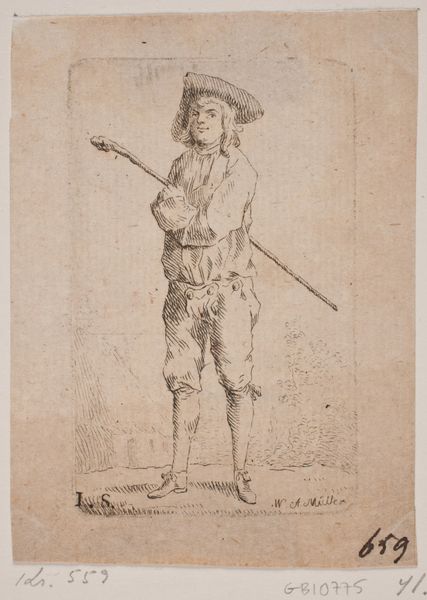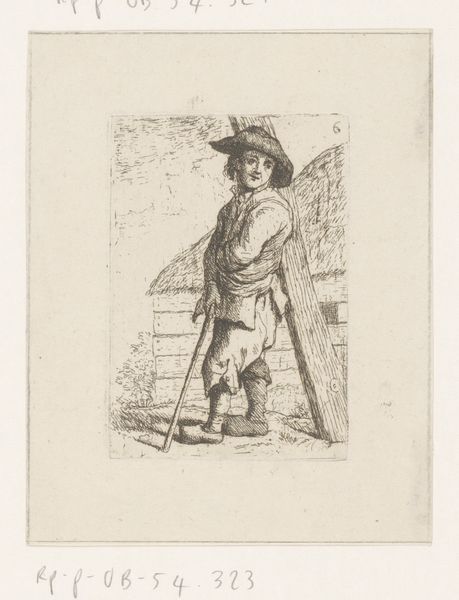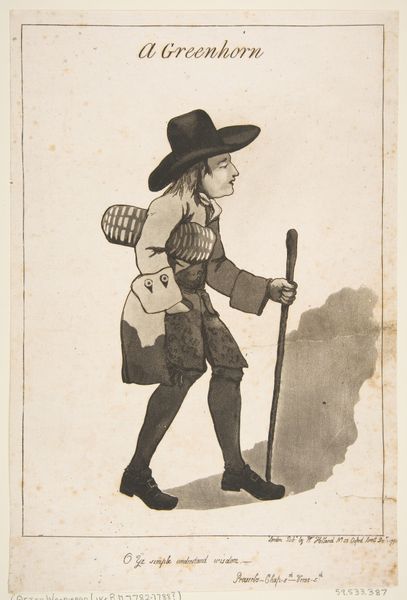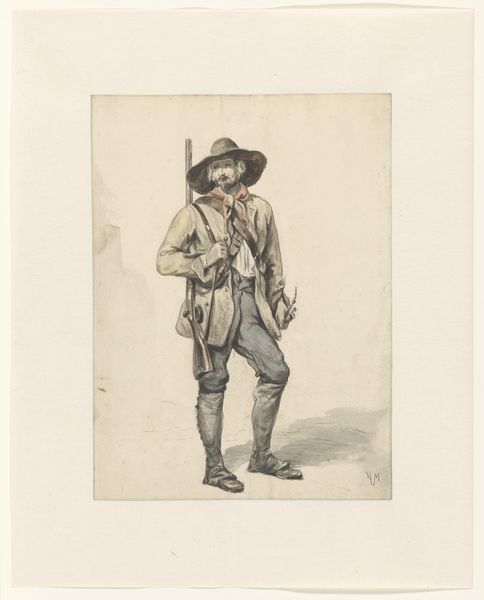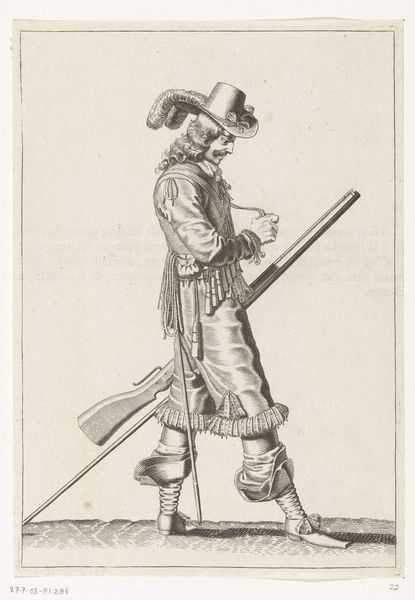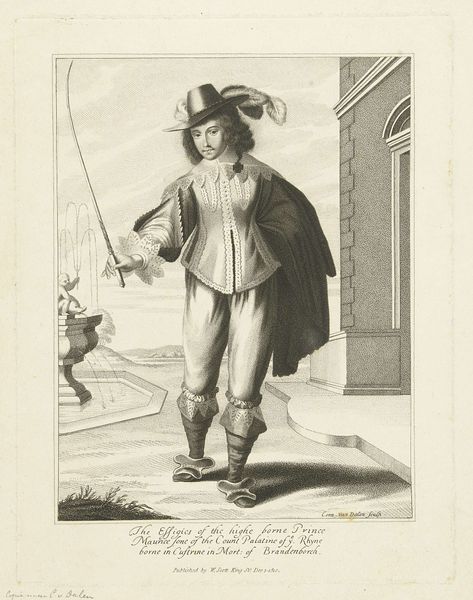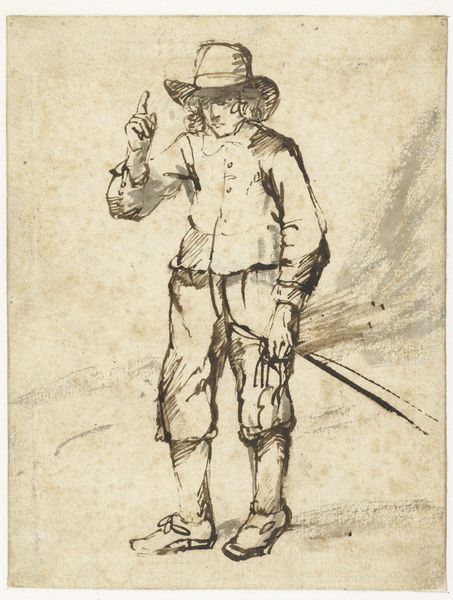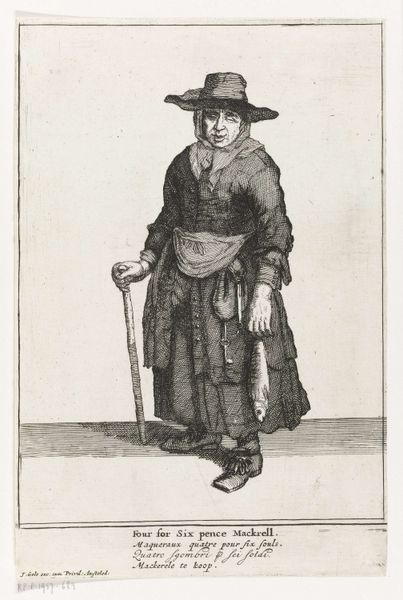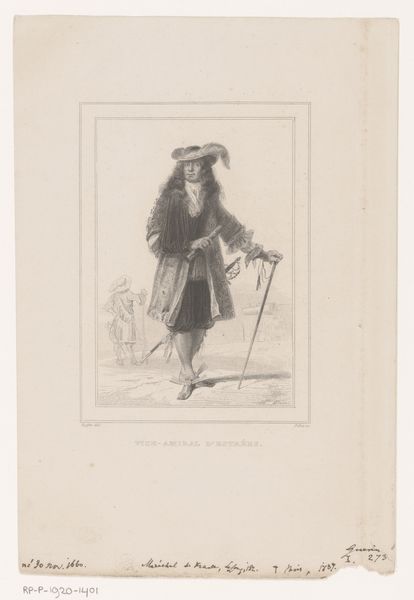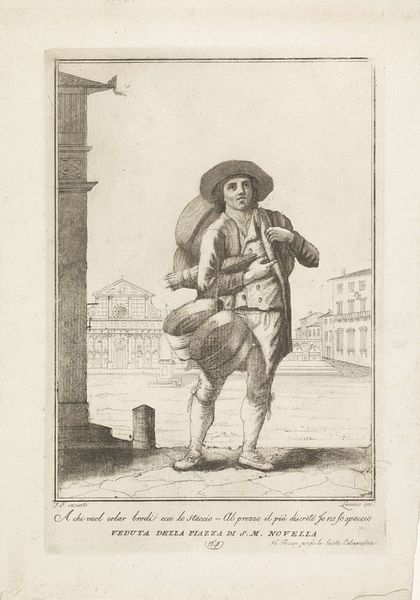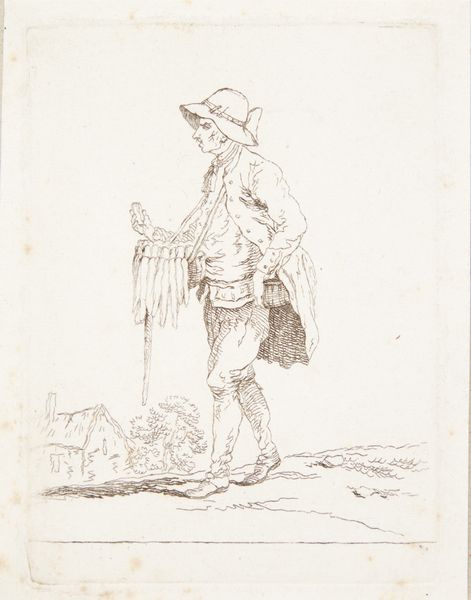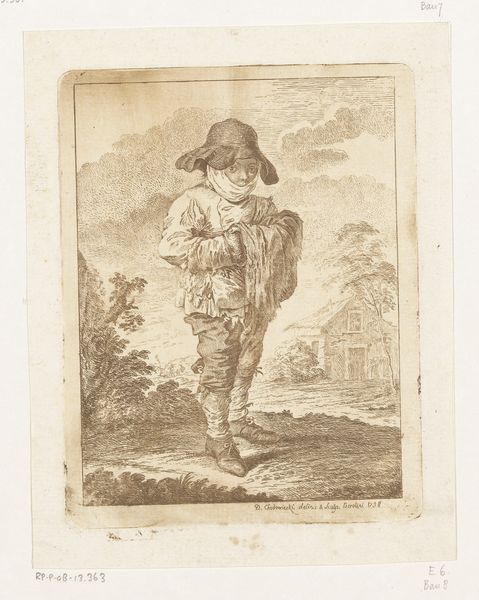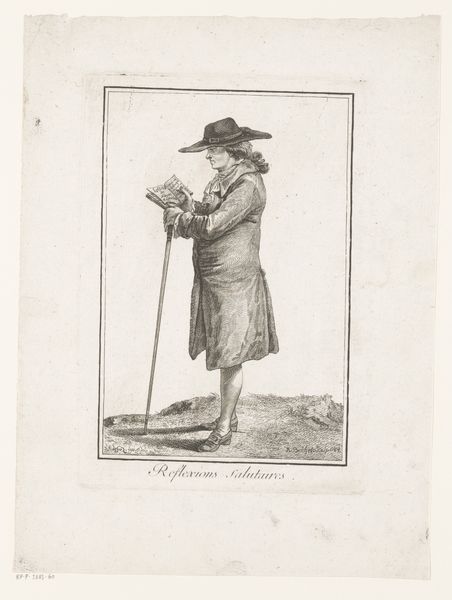
engraving
#
neoclacissism
#
old engraving style
#
figuration
#
genre-painting
#
engraving
Dimensions: height 164 mm, width 107 mm
Copyright: Rijks Museum: Open Domain
Curator: What a peculiar instrument! The light, airy feel of this piece is rather charming. Editor: Indeed. This engraving by Adam von Bartsch, from around 1795, is entitled "Young Man Playing an Orphica before a Balustrade". It's a snapshot of genre painting, wouldn't you agree, portraying an individual in his element? It reveals insights into musical and social practices of the late 18th century. Curator: I'm immediately drawn to the stark contrast between the precise linework detailing the man and the instrument, and the almost sketch-like quality of the background. The architectural elements versus the loose foliage... interesting juxtaposition of form and lack of form. Do you believe that's simply an artistic choice, or a commentary of some sort? Editor: Possibly both! The neat attire of the figure against the natural backdrop could symbolize the encroachment of culture upon nature, a recurring theme of the Enlightenment. Or perhaps a reflection on class? We have a clean, well-groomed individual, posed against a well-to-do balustrade. Is this painting for everyone? Is access granted to this Orphica player, in general? Curator: I see what you mean. The subject's gaze does not invite us, the viewers, into his performance; instead, he looks toward his instrument, deeply internalized. As to your points about the architectural aspects - structurally speaking, note the vertical columns compared with the circular adornments on the balustrade, the engraving seems almost obsessed with geometrical contrast. Editor: Right! This was a period deeply fascinated with form, as expressed via Neoclassicism. The rigid lines of the Orphica mirror the period's emphasis on structure and order, as it challenged previous baroque ideals of the 17th century. Also, given the cost of engravings back then, owning something like this implied at least a middle-class family’s social status. Curator: Well, it seems to reveal the layers present, as always, when scrutinizing an artwork closely. The careful application of line creates a sense of depth. Editor: Absolutely! And examining this work gives a hint of the musical landscape of the late 1700s and offers some reflections on societal standards of the time, both through imagery and production.
Comments
No comments
Be the first to comment and join the conversation on the ultimate creative platform.
